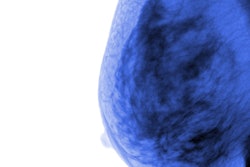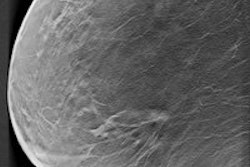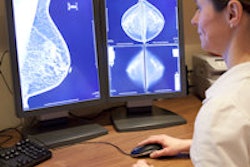
If a breast imaging facility wants to stay in operation, it must track its performance quality as part of Mammography Quality Standards Act (MQSA) requirements. How can this be done most efficiently? The American College of Radiology's National Mammography Database can help.
Established in 2008, the National Mammography Database (NMD) is part of the organization's National Radiology Data Registry. It was designed to help breast imaging centers and individual radiologists measure their performance against their peers, wrote a team led by Dr. Cindy Lee from the University of California, San Francisco, in an article published in the American Journal of Roentgenology.
The NMD "is a powerful quality improvement tool because it allows users to compare their outcome measurements with those of similar groups of radiologists locally, regionally, and nationally," the group wrote.
Real-world ranking
Mammography outcomes data have long been collected by the U.S. National Cancer Institute's Breast Cancer Surveillance Consortium (BCSC), a network of seven mammography registries across the U.S. The BCSC continues to gather this information, but its scope has narrowed since 2009, when federal funds began to be funneled to specific data analysis projects, Lee and colleagues wrote.
 Dr. Cindy Lee from the University of California, San Francisco.
Dr. Cindy Lee from the University of California, San Francisco.And although breast centers can access information from the BCSC, it may not easily translate to a performance assessment specific to particular practices. That's where the NMD comes in, Lee told AuntMinnie.com.
"As of today, the NMD is the largest database of its kind, with more than 10 million mammograms," she said. "And for those practices that are an [American College of Radiology (ACR)] Breast Imaging Center of Excellence, it's free to join."
Lee and colleagues wanted to analyze screening mammography data submitted to the NMD since its inception to confirm its collection feasibility and to draw parallels to BCSC data. For the study, the group included NMD information gathered between January 2008 and December 2012 from 90 mammography facilities in 29 states. The data represented more than 3.2 million screening mammograms and more than 1.8 million women and included demographic information reported by the women themselves, as well as clinical findings, screening mammography interpretation, and biopsy results (AJR, April 2016, Vol. 206:4, pp. 883-890).
The researchers calculated cancer detection rate, recall rate, and positive predictive values for recommended biopsy (PPV2) and performed biopsy (PPV3) from sites participating in the NMD. They compared these results with the same metrics generated from BCSC information.
They found the following mean values for major clinical parameters across the NMD network:
- Cancer detection rate: 3.4 per 1,000
- Recall rate: 10%
- PPV2: 18.5%
- PPV3: 29.2%
There were no statistically significant differences in performance measures across practice type, practice setting, census region, or annual volume, according to Lee and colleagues, and the NMD data were comparable to those reported by the BCSC.
"Our study shows the feasibility of using the National Mammography Database to audit mammography facilities and to provide current, ongoing benchmark data," the group wrote.
Where to improve?
The NMD removes the burden of measuring performance from both practices and individual radiologists, and it helps put their performance into perspective, Lee said. Practices automatically upload data, and the NMD produces reports that are sent to the practice's administrator and to breast imagers themselves every six months.
"This information can help radiologists figure out what they need to work on, but it also confirms what they do well," she said. "Using the NMD allows these practices to fulfill the MQSA requirement of demonstrating ongoing practice improvement and, therefore, to maintain their certification."
Lee and colleagues hope their study will spur more breast imagers to participate in the NMD and make it an even more powerful tool.
"We want this database to be as useful as possible, and we encourage more people to join," she said.
Those interested in joining the National Mammography Database can find more information about it here.



















